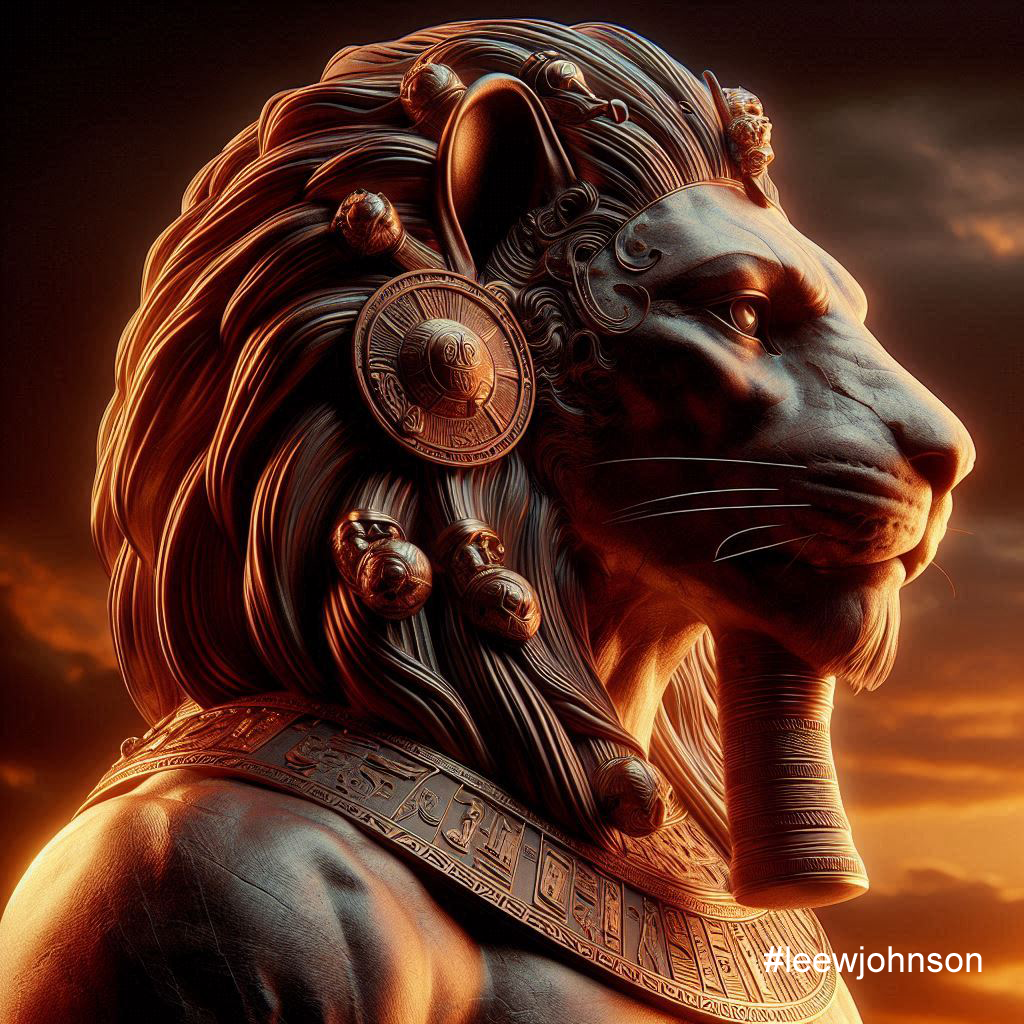Maahes

In ancient Egyptian mythology, Maahes occupies a unique position as a deity of war, protection, and the weather. Often depicted with the head of a lion, Maahes embodies the raw power and ferocity that lions symbolize.
He has a close connection with Sekhmet and Bast in that his cult centres were in the same places as these two deities, namely Taremu and Per-Bast, and that he is said to be the son of Ptah and the feline goddess, being Bast in Lower Egypt and Sekhmet in Upper Egypt.
Other people have likened him to Abaddon and Vine. I wonder if the name and imagery of Marbas from the Ars Goetia were taken from Maahes. I wouldn’t like to assume they are the same entity just because their names and appearances are similar, but then again, Vine appears as a lion and is labelled as ‘the Destroyer’ which is associated with Maahes, so there may be something there.
Origins and Depictions
Maahes, also known as Mihos, Mios, or Maihes, is typically portrayed as a man with the head of a lion, sometimes wielding a knife or standing beside other gods such as Bastet or Sekhmet, who are also associated with lioness or feline imagery. His name means “He who is true beside her,” emphasizing his role as a protector and his close association with other deities, particularly the lioness goddesses herself.
The etymology of his names however also reveals some other aspects. His name can be translated directly as “(one who can) see in front”. J. Hill on the website https://ancientegyptonline.co.uk/ also adds that, “…the first part of his name is also the first part of the word “ma” (lion) as well as the verb “maa” (to see) and it is spelled with the symbol of a sickle for the sound “m”, linking it with the word Ma’at (truth or balance). As a result, another possible translation is “True Before Her” (referring to Ma’at).”
Some of his titles were Lord of Slaughter, Wielder of the Knife, and The Scarlet Lord. J. Hill also adds The Lord of the Massacre, Avenger of Wrongs and Helper of the Wise Ones. It is also mentioned that the Greeks associated Maahes with the Furies and gave him the epithet The Kindly One.
Role and Attributes
Maahes is predominantly known as a god of war, symbolizing the pharaoh’s might in battle and the protective power of the sun. His fierce lion form is a potent symbol of strength and courage, qualities essential for both warriors and rulers. As a war deity, Maahes was invoked for protection in conflicts and was believed to vanquish enemies of the gods and the pharaoh.
In addition to his martial aspects, Maahes was also connected to the protective qualities of lions. Lions were revered in ancient Egypt not just for their hunting prowess but also for their protective nature towards their prides. Maahes embodied this dual aspect of aggression towards enemies and protection for allies, serving as a divine guardian for the people of Egypt.
Cult and Worship
Apart from the main cult areas being Taremu and Per-Bast, the worship of Maahes was particularly prominent in the regions of Leontopolis (modern Tell el-Muqdam) and Taremu (Leontopolis in the Delta). These areas, associated with lion worship, housed temples dedicated to Maahes where rituals and offerings were made to gain his favour and protection.
Symbolism and Legacy
Maahes’ lion-headed representation is rich with symbolism. Lions were not native to Egypt but were known to inhabit the regions to the south, and their occasional appearances in the Nile Valley added to their mystique and reverence. The lion’s prowess in hunting and its majestic presence made it an ideal symbol for the qualities that Maahes embodied.
The legacy of Maahes extends beyond his immediate religious functions. As a figure representing the divine aspect of warfare and protection, Maahes influenced the iconography and religious practices of neighbouring cultures. The lion-headed deity motif can be seen in various forms throughout the ancient Near East, illustrating the cultural exchanges and syncretism of the time.